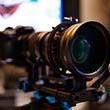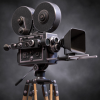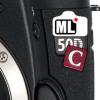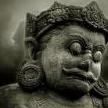Leaderboard
Popular Content
Showing content with the highest reputation on 05/19/2014 in all areas
-

Lenses
ozey40 and 3 others reacted to Andrew - EOSHD for a topic
The official EOSHD discussion thread for all things lens related!4 points -

Must watch video on full frame vs crop cameras. "Full frame look" covered.
dafreaking and one other reacted to Andrew - EOSHD for a topic
When you attach a lens to a crop sensor, the lens remains identical. The image is identical, but for the crop into the image circle. He says the whole photographic system of aperture, ISO, focal length makes no sense. SAY WHAT!? Aperture and focal length relate to the lens only. Why should they apply to a combo of sensor size and lens, as the video suggests it should? A 2x crop factor helps when it comes to figuring out the angle of view. 12 x 2 = 24mm. That's about it. The aperture doesn't change. The exposure doesn't change. Applying crop factor to ISO is a huge mistake. That a larger sensor captures 'more light' ignores the fact that large sensors can still have small pixels due to very high megapixel counts or large gaps in-between pixels. The ISO does not crank up on a smaller sensor because it isn't receiving as much light as a larger sensor. You have to look at the sensor on a per pixel basis. The size of the pixels. Take a 24MP full frame sensor and cut out 16MP from the middle to give you a crop sensor. Look at both images at 1:1... See a difference? No. So why does this guy suggest otherwise? Because what he is neglecting to mention is he's not looking at the images 1:1, but downsampling the 24MP to 16MP, then comparing to a 16MP crop sensor. The downsampling of course makes for a cleaner image. This is also where DXOMark goes wrong very often. They include the downsampling in their calculations too. So a 36MP sensor would do very well in low light even if it was noisier on a per pixel basis. Look at their low light results for the 5D Mark III vs D800. We know the 5D Mark III has better high ISO than the D800 yet DXOMark somehow haven't managed to show this in their scores. What matters is pixel size, pixel architecture and readout noise... Not sensor size. The Blackmagic Production Camera is absolute proof that this guy's theory fails the reality test.2 points -

Lenses
TheRenaissanceMan and one other reacted to nahua for a topic
@EOSHD Maybe instead of a thread, a real forum section. I'd like to discuss specifics - Micro 4/3rds lenses, vintage lenses, full frame lenses, etc. I'm just worried that specific topics would be lost in a single discussion thread.2 points -

Must watch video on full frame vs crop cameras. "Full frame look" covered.
dafreaking and one other reacted to dishe for a topic
I am shocked and appalled at how terrible the information in that video is (and I want my 37 min of my life back). What makes it worse is that he is actually presenting it with such arrogance and conviction, that people are buying into it! Karrim, let me take a moment to explain: If you take a picture on a 7D (APS-C crop) vs a 5D (Full Frame) with the same 50mm lens, the 7D only sees the center part of that lens. If you were to take that picture from the 5D and crop it inward 1.6x in post, it should look pretty much identical to the 7D's picture. Same bokeh, same DOF, same amount of light exposure. The difference is only that you are cropped inward so much that you might not be able to get your entire subject in the frame anymore. The aperture does not change on a crop sensor camera. PERIOD. However, you have to stand farther away from your subject to get what you want to fit inside the crop. Since DOF is a combination of aperture and distance, the DOF will change and become deeper as you step back more. But again, the aperture does not change! Only your distance has. A picture taken at the same distance will have the same DOF, and most importantly the same amount of light! The reason the manufacturers list "35mm equivalents" on their lenses is not at all misleading. Many photographers think in full frame FOVs, so they need to know that a 28mm is no longer a wide angle, but rather a medium one. The amount of light gathered does not change, the aperture is very much the same. But your composition is different, as you are standing farther away. F/2.8 at a particular distance to your subject will yield the same DOF no matter what size the sensor is. What Northup is saying is PATENTLY FALSE. As far as light gathering with a speed booster- imagine you have a flashlight, and shine it at a wall. As you get closer to the wall, the photons are less scattered, closer together, smaller and brighter. If you've ever tried to fry ants on a sidewalk with a magnifying glass, you know how a focal reducer can condense the light from the sun into a single spot intense enough to start a fire. So when using a speedbooster, you are actually gaining more light, technically more than a full frame camera with the same lens would as it is more condensed now. This is science, this is physics of light, and has been totally explained to death before. As an aside- his whole thing about smaller sensors having poor low light performance because they see less light overall. I'm with Andrew- total and complete bullocks. The size of the sensor overall has NOTHING to do with it, but rather the size of the photosites. The photosites are what make up the individual pixels for your image. The higher the megapixels, the more densely populated the sensor is and therefore the smaller each photosite. Smaller photosites gather less photons per exposure and therefore get noisier at similar ISO values to larger ones. But technically, you can have a small sensor with larger photosites than a larger one. The Sony A7S how shown what a difference smaller megapixel counts can do for a sensor in low light. Technically Panasonic can make a MFT sensor especially designed for low light by only making it 10 megapixels. Then we'd get stellar ISO performance compared to any 5D, despite sensor size. He keeps going on about how because the sensor is smaller than a full frame one, it can't see as much light and therefore the ISO needs to pump up the gain higher to reach the same exposure. Everytime he says that I want to shove my fist through the computer screen for being so arrogantly ignorant.2 points -

Must watch video on full frame vs crop cameras. "Full frame look" covered.
dishe and one other reacted to Andrew - EOSHD for a topic
Referring to the video. It has more holes in it than a block of swiss cheese. He says a large sensor captures more light, without mentioning the crucial SIZE and NUMBER of pixels. It is the size of the pixels and how many there are that gives you your resolution and dynamic range. The Blackmagic Production Camera for instance has a larger sensor than the GH4 but sucks in low light because it has small photosites due to global shutter circuitry around each pixel taking up a lot of room. He has grossly oversimplified things in that video through lack of basic knowledge. He is multiplying aperture by crop factor to give an equivalent depth of field, this too is bollocks. F1.2 is F1.2. At the same focus distance and focal length you will get the same shallow DOF with a 50mm F1.2 on a small sensor as you would do on full frame. The difference is that to maintain the same framing, the small sensor camera has to move back from the subject, and the focus point shifts backwards towards infinity, which lessens the separation between the subject and background making it appear that the lens is giving a less shallow DOF. He also really stupidly in his Canikon love affair doesn't seem to mention that F1.2 is as bright as F1.2 no matter what the sensor size is. F1.4 does not = F2.8 with a 2x crop sensor in terms of exposure or light transmission.2 points -

Grading
jonpais and one other reacted to Andrew - EOSHD for a topic
If this thread takes off then I'll make it into a sub-forum. Having it as a sticky thread is a good way to get the flow of conversation started as sub-forums are more 'hidden away'.2 points -
The Prince of Darkness - Gordon Willis has always been a big influence on me. Klute and All The Presidents Men are 2 of my fave films he shot , He was one of the first to pioneer this darker , more realistic look to lighting. It almost looked like it was all available light , but it was Gordons masterful use of light and film to create these looks. The Godfather series really took this look to the limit , lots of use of shadows. David Fincher is the new Prince of Darkness and owes alot to Gordon for leading the way . Paul Greengrass quotes All the Presidents men as a big Influenece on him too. Eveyone on this forum should study Gordon's work - you will learn alot form him.2 points
-

Grading
Ratguity reacted to Andrew - EOSHD for a topic
The official EOSHD thread for discussion of grading and colour correction. Techniques, software, codecs, etc.1 point -

Lighting
noone reacted to Andrew - EOSHD for a topic
The official EOSHD forum for discussion of lights, lighting, both creative techniques and the hardware!1 point -

Must watch video on full frame vs crop cameras. "Full frame look" covered.
Jacek reacted to KarimNassar for a topic
* edited upon request: This video has led to a debate between members questioning the accuracy and validity of the claims made in this video. It has been reviewed as incorrect and confusing so be aware of that before watching.1 point -

RIP Gordon Willis, ASC
Aussie Ash reacted to Emanuel for a topic
All this craziness on high ISOs comes from his legacy, among others, such as Kubrick or Storaro, of course. I guess all of them loved the 'film noir', actually, the German Expressionism to have moved to Hollywood. Also a minimal concept of light and shadow brought to the mainstream, never seen before except with the italians or french (or Cassavetes in America) three, two, one decades before. But not strictly for aesthetic reasons. To us, arrived as the 'light fimmaking' possible to conquer the world today in Sundance. Even if my mom complains the movies are too dark nowadays... : D Those were golden days when men like him changed forever the way the movies could be made. We also owe this to him. Emanuel http://variety.com/2014/film/news/the-godfather-cinematographer-gordon-willis-dies-at-82-1201185649/1 point -
A lens at f2.8 is letting in the same amount of light whether the light is hitting something an inch or a millimeter its still the same amount of light. A larger sensor sitting behind the lenses doesn't get more light then a crop sensor or a m43 sensor or any size sensor sitting behind the lens.1 point
-
1 point
-
maxotics - this weekend I was out filming in the glorious UK sunshine (quite rare!! it usually is raining) I've been using a very good f2.8 constant aperture zoom. The Bourne Lens - the Nikon 28-70mm f2.8 IF-ED, this was used to shoot a large part of THE BOURNE ULTIMATUM its a steller lens - razor sharp very little focus breathing (less than the Carl Zeiss Compact Zoom CZ.2 28-80mm T2.9 which $19,000 lens) I can see why they used this lens for the movie ...it is superb! it covers a big useable range so you can shoot quickly without changing lenses , its fast so bokeh heaven cinematic narrow DOF , also can close focus to about 30cm which is useful . It is heavy so I have made a new Tecoir shoulder rig for it with an Arri matte box. it is constant apperture through out the zoom range. now with a Lens Turbo speedbooster on my G6 it becomes a monster lens approx f1.8 20-50mm So I have been shooting outside at f1.8 in full bright sunlight with staked Tiffen NDs (20) and its looks amazing! I have read about this lens for awhile especially in American Cinematographer Magazine , Paul Greengrass /Barry Ackroyd have used it on the movie Captain Philips too as its small and light.1 point
-
He said the "aperture changes", which is wrong. It does not. If it did, the exposure would as well. He wants to say that those manufacturers are somehow "lying to you" about the comparable lenses, that it should give comparable F-values as well. But the comparable f values would be far more misleading since they would pertain to light gathering ability! But that's just one thing he said. Most of his "points" are misguided, especially about how sensor size relates to light gathering ability. In fact, I have more problems with what he described than agreements. Please don't just accept this video at face value.1 point
-

Must watch video on full frame vs crop cameras. "Full frame look" covered.
AndrewM reacted to KarimNassar for a topic
I disagree and I believe it to be true, this is what I mean visually by what I said, there is the same amount of light let through by the lens on all 3 examples: now if I am still wrong then I have completely misunderstood speedboosters from the start. let me know1 point -

Must watch video on full frame vs crop cameras. "Full frame look" covered.
andy lee reacted to Andrew - EOSHD for a topic
This is also false. Speed Booster works by brightening the image projected at the sensor. The light from the lens is concentrated into a smaller area. It has nothing to do with how far you crop into it. If you took the centre of the image in photoshop and cropped it, you do not 'lose light' and the image does not darken does it!??!1 point -

Must watch video on full frame vs crop cameras. "Full frame look" covered.
jonpais reacted to Andrew - EOSHD for a topic
It's total bollocks.1 point -
Grading
Andrew - EOSHD reacted to bengrubb for a topic
Hi all, I saw the link to this thread appear on Twitter and I thought it sounded like it could potentially be very interesting so I signed up! :) I'm really fascinated by the colour grading/treatment process so hopefully I can pick up some tips. Funnily enough, I downloaded FilmConvert and Davinci Resolve Lite today to try out. I've previously doing my colour grading through After Effects and although it's really good, I find that it can often make my workflow a little sluggish, especially when using Dynamic Linking. Anyway, if anyone has any tips for either FC or DRL then I'm all ears!1 point -

GH4 With/Without Black Pro Mist Filter
nahua reacted to AaronChicago for a topic
For anyone interested in seeing a comparison of 4K with/without a Pro Mist filter check it out.1 point -
Any C100 users around?
Ben Prater reacted to nigelbb for a topic
You have that wrong. The C100 is an incredibly popular camera used by thousands of working professionals. Admittedly it's not so popular with the cheapskate amateurs on this forum but that's only because they cannot afford one :lol:1 point -
RIP Gordon Willis, ASC
nahua reacted to Aussie Ash for a topic
Very good thirty minute interview with Gordon here1 point -

Surprise! Sony Alpha A6000 video mode huge improvement
Kwstas Poulios reacted to EyeSoul for a topic
Hey everyone! I just wanted to say before I picked up the A6000 I was really in the market for the D5300 being that I had the D5200 and wanted to upgrade do to the improvements. So one day I walked in the camera store with every intention on buying a D5300 and just happen to inquire when the A6000 would be in-stock, to my surprise they had it in, this was way before the projected release date. I asked to play with it a bit, long story short I left the store with the A6000. I very much liked the images out of the D5200 with no real complaints other than the FPN in the shadows and the aperture issue. I had no intentions on changing brands but when I put the little thing in my hand I just fell in lust, the form factor,the features and the rumored video quality basically made me buy a camera that was on my radar but not a definite purchase in my mind. After I got home I wondered had I made the right decision and even thought about taking it back but in the end I kept the A6000 and have no regrets. I feel the negatives of the A6000 are maybe the absence of a mic input and the codec but other great features tend to make you not care so much about them, personally I haven't ran into a issue with either thus far. I think the big thing with this camera is dialing the in-camera settings far as picture profile to a good starting point,considering you plan on grading your footage. A lot of sample footage I have seen online really doesn't do the camera justice, too much sharpening and other degrading factors in my humble opinion. In the right hands and when people really get to know the A6000 I feel some great images will be produced with it. Sorry for the long drawn out post.1 point -
Some interesting locations for sure. I've been reading this book: http://www.amazon.com/Shoot-Video-That-Doesnt-Suck/dp/0761163239/ and one of the key points is to always tell a story, no matter what (even a test video), otherwise folks won't watch your work. Thus, write a beginning, middle and end, decide on the 'hero' of each scene, then shoot it. Just a little bit of planning goes a long way. For example, you could start off talking with friends about scouting locations (intro characters and set the stage for what is to follow: the beginning of the journey). Then film the locations and talk about what is interesting and useful in each location. Then wrap up back at home base with a quick recap of what areas will work for what purpose. To get more creative, you can have something happen while scouting locations: something scary usually works: an unknown race of mutant carnival workers crossed with escaped mental patients have taken one in your group. Now you have to rescue him/her. Only one or two make it out alive to tell the story. The hero(s) learn not to mess with mutant mental carnies unless packing sufficient heat and having backup available.1 point
-
Blanche, I think you have started a brilliant post. I think we are so glued with technology (which does indeed forma very important part of film-making, style and narration, apart from Many other things), that we have forgotten completely about content, minus technology. But, story-telling is something that is hardly discussed, anywhere on the internet. Most of the launch Videos of New Cameras (ala the GH3 and GH4), have either only story-less footage, or poorly narrated stories. Admitted I am absolutely ignorant where Documentary Narration Styles are concerned. I had a very close friend, who disapeared a few years ago, and then, passed away, even more mysteriously, before she could tell me about it (she was a national award winning DoP). Also, I don't really get to interact with documentary makers, at all. I like themartists suggestion. I think its creates co-operation and collaboration of talents. I could propose something, if everyone agrees. We can make a list of things we could collaborate on, without any kind of commercial aspect, though by not indulging in plagiarism, or or one-upmanship, of any kind. We can always broaden or change the list of topic and the nature of the exchange, as we go along. How does this sound?1 point
-

What about story telling?
Wit reacted to themartist for a topic
A lot of people are creating amazing content. There are more indie movies and documentaries made by people currently, who surely would not have entered the industry 20 years ago. Not fair to say that nobody generates content. A mere search on vimeo will provide many examples of shorts and even features in production. Normally hobbyists are more interested in family clips, holidays etc while the more ambitious do focus on narrative. Storytelling is definitely happening, just maybe not promoted enough in threads. I second the idea to push a concept/ storytelling critique or collaborations section. Merely by critiquing videos or short movies, there can be a lot more insight into tecniques of editing etc. A thread idea could perhaps be for filmmakers to upload unedited footage with the option of users to have a go at editing and adding sound/score for a multitude of approaches. Family video footage could very easily be a horror or a tearjerker depending on execution.1 point -
Nobody stops us to publish own ideas in the Creativity & Ideas forum, to document their development, to discuss their scripts, post storyboards or production paintings, to ask for help how to find locations, tutorials for better make up or costumes or tips how to better direct untrained actors. Lighting, grip, editing, what have you. Why does no one take advantage of this? Why does everyone keep his plans or fancies in secrecy?1 point
-

A7s, Depth-of-Field, and the Micro-4/3 Advantage
Andrew - EOSHD reacted to richg101 for a topic
If I can find the time I will shoot some tests with my medium format dof adaptor vs full frame vs aps-c later today. There is a difference. Neither one nor the other is better or worse. They're just different.1 point -

Shooting 4K for 2K on the Panasonic GH4 plus pre-review short film
nahua reacted to ZEBRAWORKZ for a topic
i did some 96fps filming in Berlin with a Skateboarder and my selfmade handheld gimbal. it's not that detailed than the fs700 slowmotion, but i like to have the possiblity to have 96fps in such a small body1 point -

A7s, Depth-of-Field, and the Micro-4/3 Advantage
Nick Hughes reacted to Julian for a topic
Why? It's the truth. You can try it out yourself if you have a 50mm and 200mm. Or whatever focal lengths.... The bokeh quality is an interesting topic. I think bokeh 'roll off / smoothness' is better with bigger sensors vs same bokeh equivalents on smaller sensors. Would be nice to see a test of this. Might try something myself.1 point -

CONTENT IS KING!!!
Wit reacted to Andrew - EOSHD for a topic
Hmm. So is this forum going to start with yet more arguing and personalities or are we gonna talk IDEAS!??1 point



